উৎসর্গঃ সৃষ্টির সেবক, রেডিও আবিষ্কারক স্যার জগদীশ চন্দ্র বসু – যাঁর স্পর্শে পৃথিবী ধন্য!
Today, textile touches our lives so many ways. Scientists are seeking advanced engineered materials and sophisticated solutions for challenging applications. A new generation of fast growing interdisciplinary innovations outreaches the engineered textile structures for superior functional features. This article sheds on light on the recent research interests and the challenges and opportunities with these emerging intelligent smart textiles in perspective.
Highly flexible textile structures are used extensively today to produce stronger, lighter, safer and smarter products to replace heavy metal with superior performance and extended service life. The classical research focus remains integrating emerging technologies to textile structures to design advanced materials with critical performance requirements predominantly for intelligent interactions and functional features. For more in-depth details explore the links and featured insights below.
Broad Classification of Smart Textiles:
- Passive Smart Textiles
- Active Smart Textiles
- Ultra Smart Textiles
Areas of Interests (see links):
- Energy storage/harvesting textiles that can sustain, maintain and manage energy efficiently
- Sensing
- Thermoelectric
- Luminescent
- Electronic textiles
- Conductive textile materials
- Switches, sensors, actuators, MEMS, NEMS
- Thermochromic textiles
- Photonic textiles
- Mechatronic engineered textiles
- BioMaterials, gene-sequencing
- Nanotechnology, nano structural materials and nanocomposites
- Modification and characterization of materials
- Molecular modeling
- Passive, Active and Ultra Smart Textiles
- Combating detection technology feature integration
- Critical coating and lamination technology sophisticated military-defense application
Challenges:
- Integration of interdisciplinary innovations
- Compatibility
- Corrosion
- Flexibility
- Efficiency
- Robustness – Life Cycle
- Recycle ability
- Sustainability
- Wash ability
- Toxic Waste Production and Environmental Impact
- High cost of materials and production
Opportunities:
- Sophisticated Active, Passive and Intelligent Solutions (see links)
- Breakthrough innovations for superior solutions and applications
- Performance: Lighter, Stronger, Safer, Smarter Products
- Features/Functions: Sensitivity, Reactivity and Adaptability
- Integration of smart textiles and wearables for superior functional features
- Nanotechnology, Sensors and Actuators infused/embedded textile technology
- Application in healthcare, sports-fitness, smart phone, automotive, entertainment and military-defense sectors
- Productivity
Market Intelligence:
- ‘Smart Textile Market Size Worth $5.55 Billion By 2025 | CAGR: 30.4%’: https://www.grandviewresearch.com/industry-analysis/smart-textiles-industry (Grand View Research Report, March 2019)
- ‘Global Smart Textile Market size is expected to reach $5,369 million by 2022 from $943 million in 2015 at a CAGR of 28.4% from 2016 to 2022.’: https://www.alliedmarketresearch.com/smart-textile-market (Allied Market Research, May 2017)
It is estimated that by 2016 there will be around 300 million wireless sensor-based gadgets for wearing on the body in the fields of healthcare and sports management as well as other activities in the fields of media, automotive, security and the home.
“A technical textile is a textile product manufactured for non-aesthetic purposes, where function is the primary criterion. It is a large and growing sector and supports a vast array of other industries. Overall, global growth rates of technical textiles are about 4% per year greater than the growth of home and apparel textiles, which are growing at a rate of 1% per year.”
The global market for nanotechnologies is projected to grow at a CAGR of around 20% till 2013, says ” Nanotechnology Market Forecast to 2013 : .” The report also projects that market for nanotechnology incorporated in manufactured goods will worth US$ 1.6 Trillion, representing a CAGR of more than 49% in the forecast period (2009-2013). This growth will largely be driven by massive investment in nanotechnology R&D by both governments and corporates across the world.
Outlook:
No doubt, the ripples of interdisciplinary innovations and super complex products will transform our future in a unique way. However, the impact of some of these emerging technologies is still unknown. Can we recycle these emerging complex wastes and sustain our environment?
What do you think?
More to come…
Acknowledgements: TexTek Solutions :: MW Canada Material Innovations.
Interesting Links:
- Textiles of the future
- Smart Textiles Salon 2011 – YouTube
- Super-threads: new e-fibres for woven smart textiles :: MaterialsViews
- Nanotube yarns twist like muscles
- told the podcast of Science magazine.
- Colorful eco-textiles thanks to nano-sized enzymes
- EU-funded research project SOPHIED
- E-textiles get fashion upgrade with memory-storing fiber
- The intelligent T-shirt that can monitor your heart, your …
- Textile industry rolls its sleeves to tackle pollution
- E-Textile Lounge: Lynne Bruning @Craftzine.com blog
- New method cleans up textile industry’s most dangerous chemicals
- DAIMLER : A holistic approach to electric mobility. smart …
- Nike Flyknit – a seamlessly knitted running shoe
- Epson sets up textile printing centre in Kyoto, Japan<!– Add or subtract cells as needed between top and bottom cells in this column
Cell specs:–><!– News Item Specs:
Image Table(image placed in table to maintain space around, contains right column with invisible place holder. DO NOT REMOVE)
Image specs: Size; maintain image aspect ratio with mazimum width or height = 75px
Headline para. specs:Headline link specs:
style=”text-decoration: none; color: #1d437f”
Text specs:Link “Read/Comment” specs:
style=”font-style: italic; font-weight:bold; color:#1d437f; text-decoration:none”
–> - Textile membrane constructions offer an innovative opportunity in modern …
- Intelligent Textiles Workshop – University of Ghent, Plug and Wear …
- Smart Textiles
- How to apply conductive nanocoatings to textiles
- New superstrate material enables flexible, lightweight and efficient thin film solar modules
- Record Efficiency of 18.7 Percent for Flexible Solar Cells on Plastics, Swiss Researchers Report
- A textile bag for bomb blast protection
- Soy Materials Make a Green Mark
- Spinning Nano Yarns – Technology Review
- Weaving Batteries And Solar Cells Into Textiles : NPR
- TENCEL C, a new dimension in textile cosmetics
- SYSTEX presents Vision Paper for smart textiles industry
-
Carbon nanotubes spin a yarn – physicsworld.com
-
Extensive uses for carbon fibre in Lamborghini’s concept car
-
Intelligent textiles offer adaptive thermal protection for …
- Nanotechnology textiles
- E-Textile Meet-Up – News – SparkFun Electronics
- pdf free download : Smart Fabrics .pdf
- Free download pdf: smart textile
- Pdf Free Download: smart textile
- Free download pdf: intelligent textiles
- BAYNEWS: Bright prospects for photovoltaics – BAYNEWS – The Bayer …
- Smart Wired Windows | Green Energy News
- Virus-based battery to power US military | TG Daily
- Innovation in Textiles News: Smart clothing could power electronic devices
- Intelligent seats to wake up drowsy motorists
- Wax, soap clean up obstacles to better batteries
- Scientists use soap and wax for better lithium-ion battery
- BBC News – Carbon nanotubes used to make batteries from fabrics
- Development of an energy harvesting film for textiles – Energy …
- Textiles That Generate Electricitiy Under Development at …
- Energy harvesting smart textiles could power pcs
- Clothing to power personal computers
- New fabric made from tea
- Trinity : River, Boat and Jute of Bengal. Coco deals it right | corentindechatel.com
- Designers sweat details so athletic clothes breathe – thestar.com
- The Power of the Sun – The Science of the Silicon Solar Cell
- Hong Kong researchers break new ground in nanotechnology
- Global NanoTech Education Programs
- Extreme Engineered Material Design
- Super Strong NanoCrystalline Cellulose Synthesis: Challenges and Opportunities
- Graphene tackles arsenic
- Guide of the photocatalyst
- Guide of the photocatalyst
- Kickstarter >> Fiber Optic Tapestry by LigoranoReese
- Design Concepts: Advances in Textiles, From Bacteria Dresses to Acoustic Threads
- Fibers that can hear and sing
- Advancement of Electronics in Textile – A Review
- Woven electronics
- Smart Textiles Blend LEDs, Circuits and Sensors
- News – Technology – Smart clothes offer emotional aid
- Smart textile baby wear could monitor a baby’s mood
- Electronic textiles read and react to wearer’s emotions
- How Butterflies Create Cute Colors
- How butterfly wings build their color
- Nanotechnology paves the way for interactive clothing(奈米科技用於互動式布料)
- Elegant and Creative use of Nano-Tex Fabric.
- Nano Clothing
- Nano-Tex Resists Spills Shirt on Today Show. Nanotechnology
- First flax fiber bicycle wins Eurobike Gold Award – Consumer Goods – Ecoseed Information Network
- DIY The Cheapest Solar Panel System EVER Cheap Solar Power
- Thin Film Solar vs. Crystalline Solar Panels – home applications
- Nanotechnology and photovoltaics
- News on Solar Fabrics and diatom solar cells
- The World of Nanotechnology | Dr. Kaku’s Universe | Big Think
- Sci Fi Science: Finding Superstrength : Video : Science Channel
- Powers of Ten
- Graphene Will Change The Way We Live | Dr. Kaku’s Universe | Big Think
- সৌরশক্তির বিমান – Solar Powered Plane
- Bamboo Benefit | Bamboo Factor
- It’s proven, bamboo clothes reduce the risk of skin cancers!
- Bamboo puts others in the shade – The Age newspaper
- Slip, slap, slop on a product made of bamboo? Deakin research gives Aussies edge under the sun
- Bamboo the answer to many questions
- পাট জিনোমের স্বপ্নযাত্রা
- প্রথম আলো – পাটের জীবনরহস্য উন্মোচন
- BBC Bangla – মাল্টিমিডিয়া – পাটের নতুন সম্ভাবনা
- Massoud Amin: A Smart Grid
- Yasser Ansari: Networked Organisms
- Electrified nano filter promises to cut costs for clean drinking water
- High-speed filter uses electrified nanostructures to purify water at low cost
- HOME (English with subtitles)
- প্রথম আলো – সবচেয়ে কার্যকর সৌরকোষ উদ্ভাবনে বাংলাদেশির সাফল্য
- প্রথম আলো Prothom Alo | Most popular bangla daily newspaper – ৩৬ বছরেই নোবেল জয়
- প্রথম আলো – সবজির সুরের ইন্দ্রজাল
Featured Insights:
2012 Airship Technology> Materials> S Islam et al., Cambridge University Press, UK. Feb 28
2010 Vectran Fiber: A Unique Combination of Propoerties for the Most Demanding Applications: http://www.vectranfiber.com/engineering_introduction.asp, Jul 10
2010 Carbon Nanotube, Wikipedia, Jul 10
2010 [PDF] KEVLAR® technical guide – DuPont. The miracles of Science™; Jul10
2010 Physical Properties of Carbon Nanotubes, pa.msu.edu/cmp/csc/ntproperties, Jul 08
2010 Extreme Engineered Materials Design, S Islam, Textile, biggani.org, Jul10
2010 Super Strong NanoCrystalline Cellulose Synthesis: Challenges and Opportunities, S Islam, Nanotechnology, biggani.org, Jul 04
2010 Sizing Nanoparticles – Determining the Particle Size of Nanomaterials by Micromeritics, AZoNano.com, Jul 02
2010 Biosensing with Nanotubes, J G Shapter, AZoNano.com, Jul 01
2010 Progress and Perspectives in the Carbon Nanotube World, M Endo, AZoNano.com, Jun 23
2010 Soft Capacitor Fibers Using Conductive Polymers for Electronic Textiles, J F Gu, S Gorgutsa, M Skorobogatiy, Jun 26
2010 Complete Analysis of Nanomaterials in Textile Textile Industry, Nanomaterials, Reportlinker.com
2010 Iridescent Solid NanoCrystalline Cellulose Films Incorporating Patterns and Medthod for Their Production, S Beck, J Bouchard, R Berry, USP2010/0151159 A1, Jun 17
2010 Striking New Details About the Electronic Structure of Graphene, Graphene, May 20
2010 Conductivity Trends of PEDOT-PSS Impregnated Fabric and the Effect of Conductivity on Electrochromic Textile, Y Ding, M A Invernale, G A Sotzing, ACSApplied Materials & Interfaces, Vol. 2, No. 6, 1588-1593, May 18
2010 Thick-film textile-based amperometric sensors and biosensors, Y-L Yang, M-C Chuang, S-L Lou, J Wang, www.rsc.org/analyst, Analyst, 2010, 135, 1230-1234
2010 Technical Interactions, R Berry, FP Innovations, Montreal, Canada.
2010 Parameters Affecting the Chiral Nematic Phase of NanoCrystalline Cellulose Films,J Pan, W Hamad, S K Straus, Macromolecules, 43, 3851-3858
2009 Canada Strikes Nanotech Gold, R Lombardi, Canadian Business Online, Oct 13
2009 New Wood-Fibre Product Holds Promise for Forestry Industry, Edmonton Journal, Jun 25
2009 A Technique for Production of Nanocrystalline Cellulose with a Narrow Size Distribution, W Bai, J Holbery, K Li, Cellulose, 16, 455-465
2007 Bioactive Silk Proteins as Geotextile Substrates, M Tsukada, S Islam, Y Ishiguro, Textiles & Clothing, Jan-Mar 5-6
2006 Carbon Nanotubes: Next Generation of Electronic Materials, J Seetharamappa, SYellapa, F D’Souza, Electrochemical Society Interface, Summer
2006 Cellulose NanoCrystals Make Plastic 3,000 Times Stronger, Nanowerk News, Oct 19
2006 Methods and apparatus for spinning spider silk protein, S Islam et al., USP 7,057,023 Jun 6
2006 Emerging Textile and Clothing Technology, S Islam, ITET J., 31 Mar 1-5
2005 High-toughness Spider Silk Fibers Spun from Soluble rc-Silk Produced in Mammalian Cells, C Karatzas, S Islam et al., Biotechnology ofBiopolymers: From Synthesis to Patents, 2 Volumes, Germany 945-966
2005 Nanotech Changes Everything, R Spence, Canadian Business Online, Jul 25
2005 Value-added Textile Technology, S Islam, Textile Excellence J., Anniversary Issue, Jul. 3(1) 55-56
2005 [PDF] TOYOBO CO., LTD.: www.toyobo.co.jp/e/seihin/kc/pbo/Technical_Information_2005.pdf
2004 Enhancing Sorption Properties of Natural Fibrous Protein Substrates. Part I: Absorption of malodorous gases, M Tsukada, H Katoh, S Islam, N Kasai, Text. J., 121(6) 48-50
2004 Antibiotic Silk Substrates for Healthcare, M Tsukada, G Shen, S Islam, Text. J. 121(5) 47-49
Updated: 20190426
Shafiul Islam
শফিউল ইসলাম
ইমেইল: [email protected] ওয়েবঃ textek.weebly.com :: Canada :: www.linkedin.com/in/shafiul2009
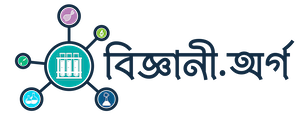
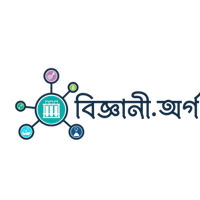




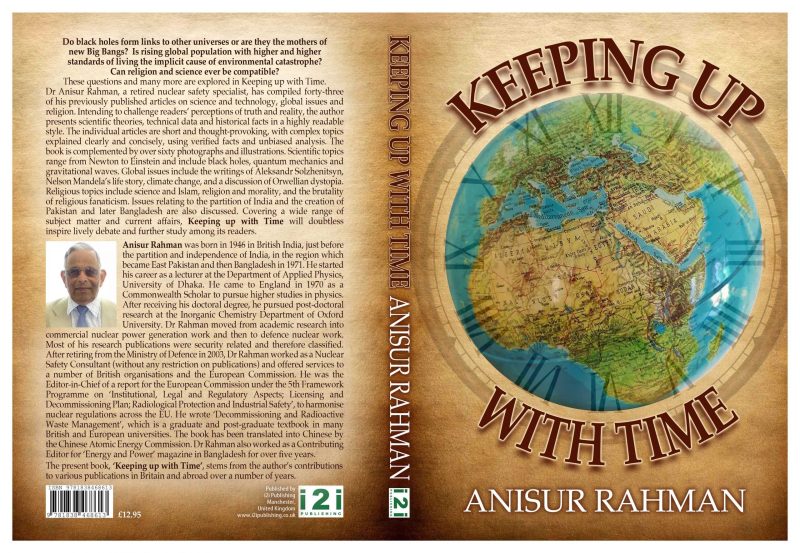
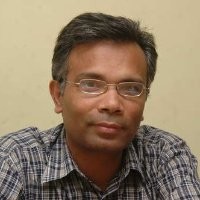
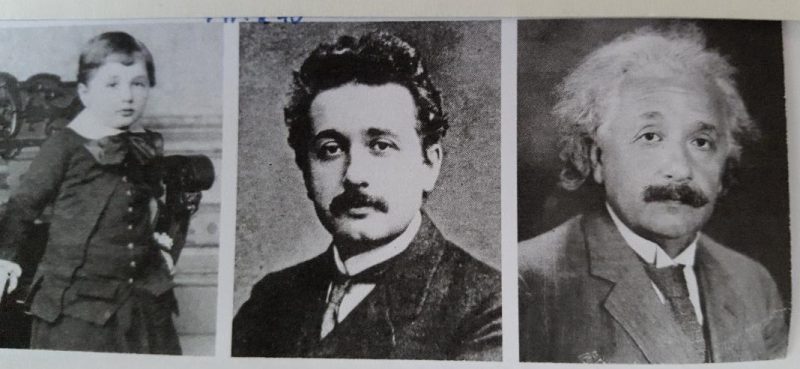
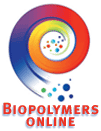
New season comes,boys and girls need to shop new style [url=http://www.hollisteroutletonlines.co.uk/Mens/Hollister-T-Shirts/]Hollister T-Shirts[/url] Hollister T-Shirts to dress themselves up.There are so many choices for you to choose.What is the best choose.I think is the [url=http://www.toryburchoutletssale.org/Tory-Burch-Shoes/Tory-Burch-Flip-Flops/]Tory Burch Flip Flops[/url] Tory Burch Flip Flops and the Hollister clothing.When you enter the hollister outlet and tory burch outlet,you may love them so much.